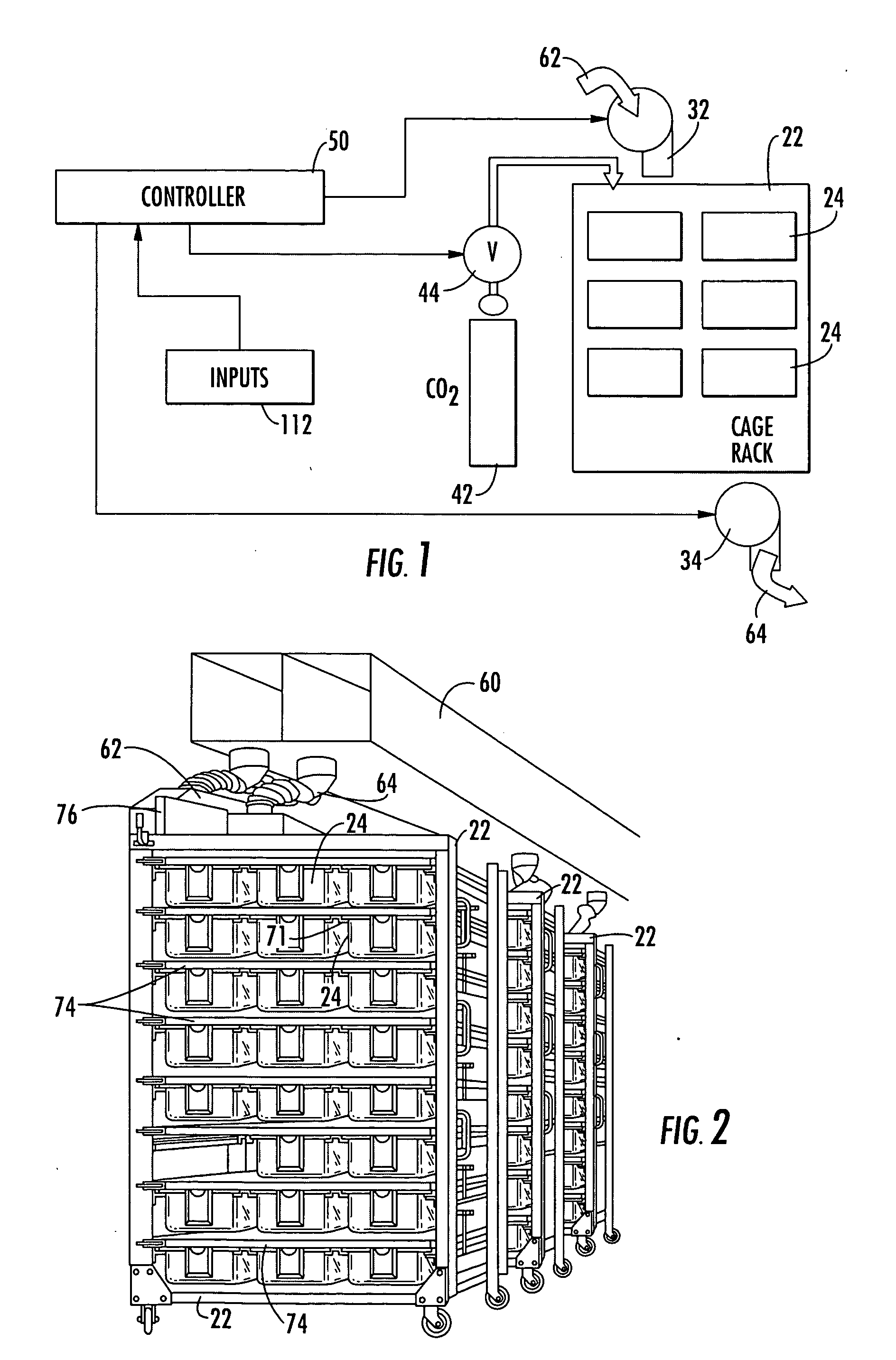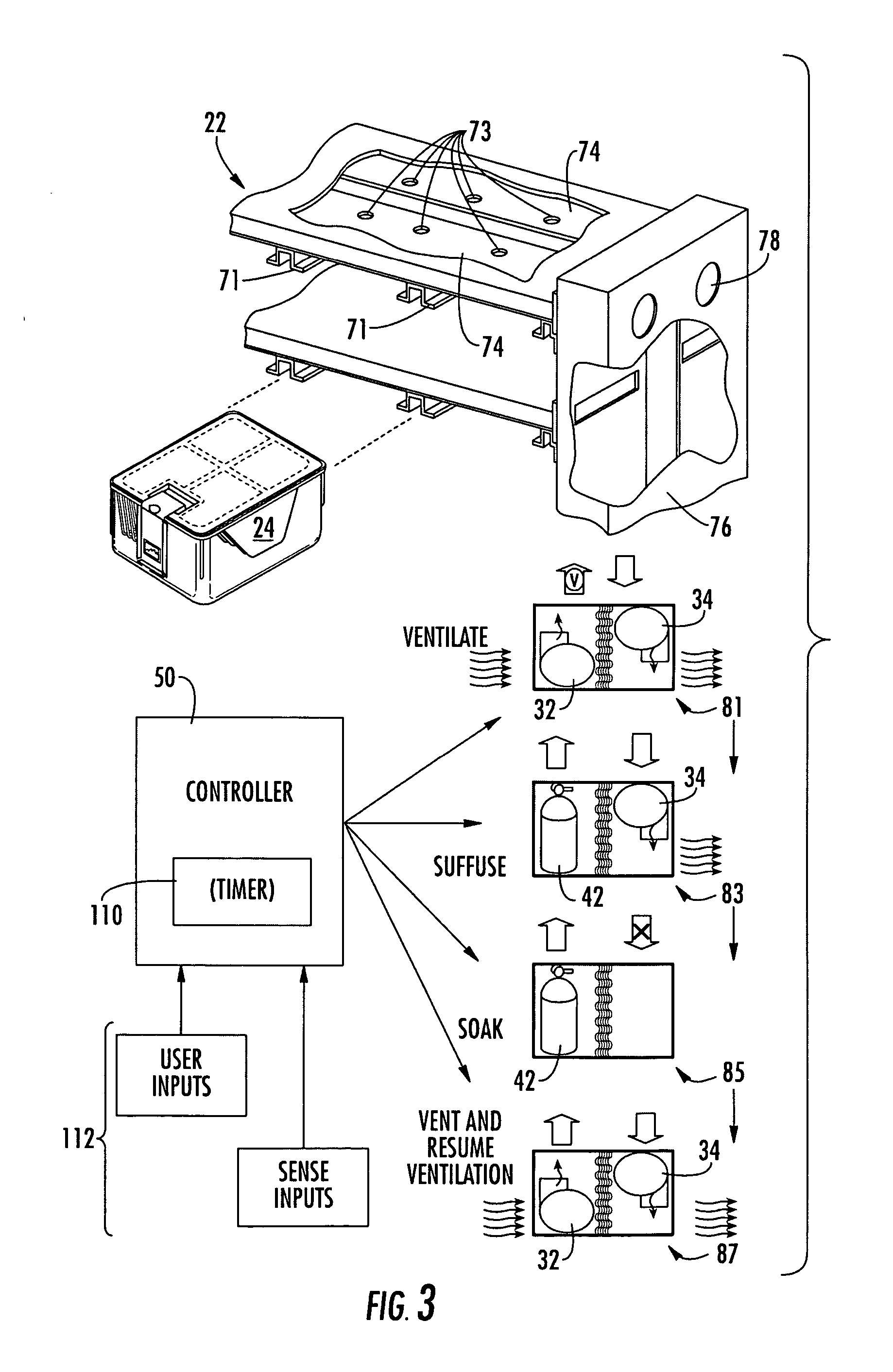Laboratory animal housing with euthanizing function
a technology of cage racks and laboratory animals, which is applied in the field of laboratory animal housing cage rack systems, can solve the problems of unsuitability of animals that may have lived through a given experiment, leakage of ventilation air, and flow of leakage air, and achieve the effect of increasing the concentration of co2 gas
- Summary
- Abstract
- Description
- Claims
- Application Information
AI Technical Summary
Benefits of technology
Problems solved by technology
Method used
Image
Examples
Embodiment Construction
[0029] Carbon dioxide (CO2) overdose is a known euthanasia technique and has been employed for mice as discussed in the background information above. Known techniques, for example as in U.S. Pat. No. 4,941,431—Anderson, process animals in air impervious cage boxes under a sealing cover containing gas fittings by which oxygen-displacing gas is injected into the cage box. Such a process of treating animals in units of cage boxes require that animals be moved into a cage box, or even if not move, that that cage boxes be removed individually from their normal environment as part of the process.
[0030] It may be stressful for animals to be displaced from their normal conditions. If moved into the same cage box the animals may become separated from their familiar cohabitant animals and mingled with strange animals. Moving the animals and / or processing cage boxes individually can be labor intensive and time consuming. The associated stress can excite the animals and complicate the procedur...
PUM
 Login to View More
Login to View More Abstract
Description
Claims
Application Information
 Login to View More
Login to View More - R&D
- Intellectual Property
- Life Sciences
- Materials
- Tech Scout
- Unparalleled Data Quality
- Higher Quality Content
- 60% Fewer Hallucinations
Browse by: Latest US Patents, China's latest patents, Technical Efficacy Thesaurus, Application Domain, Technology Topic, Popular Technical Reports.
© 2025 PatSnap. All rights reserved.Legal|Privacy policy|Modern Slavery Act Transparency Statement|Sitemap|About US| Contact US: help@patsnap.com



